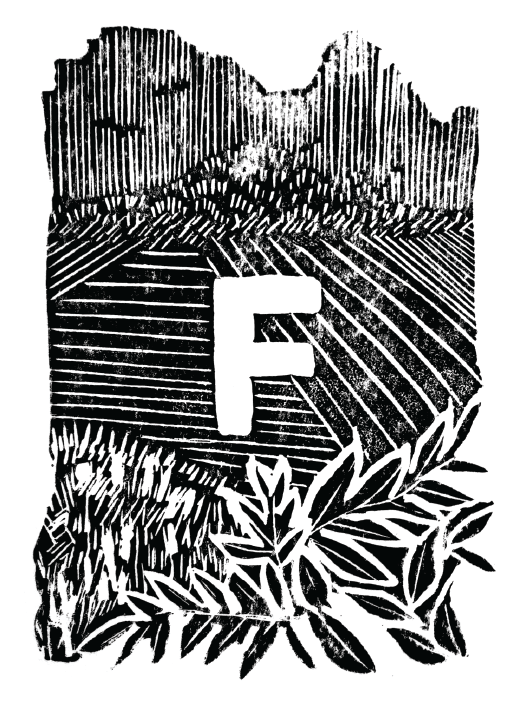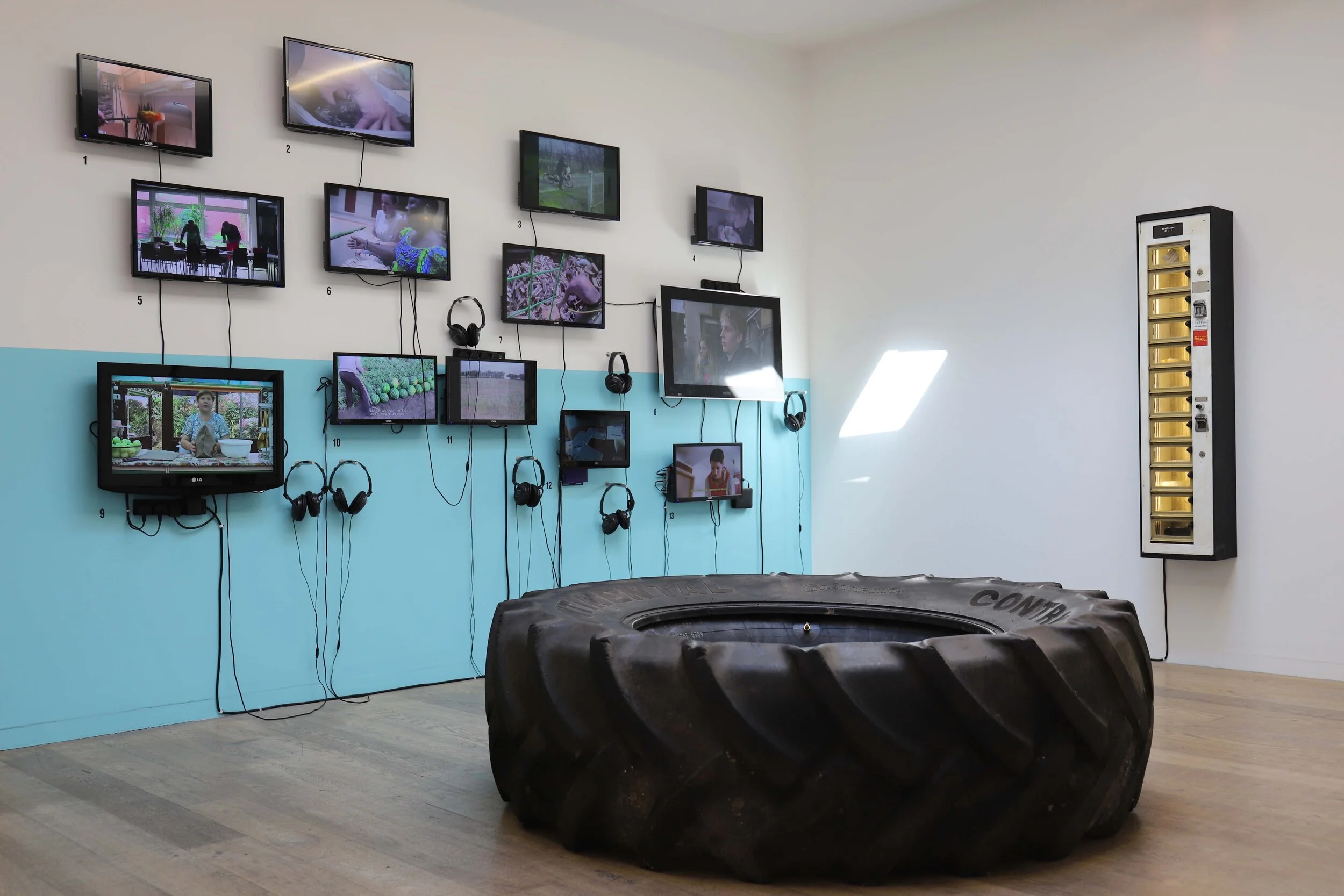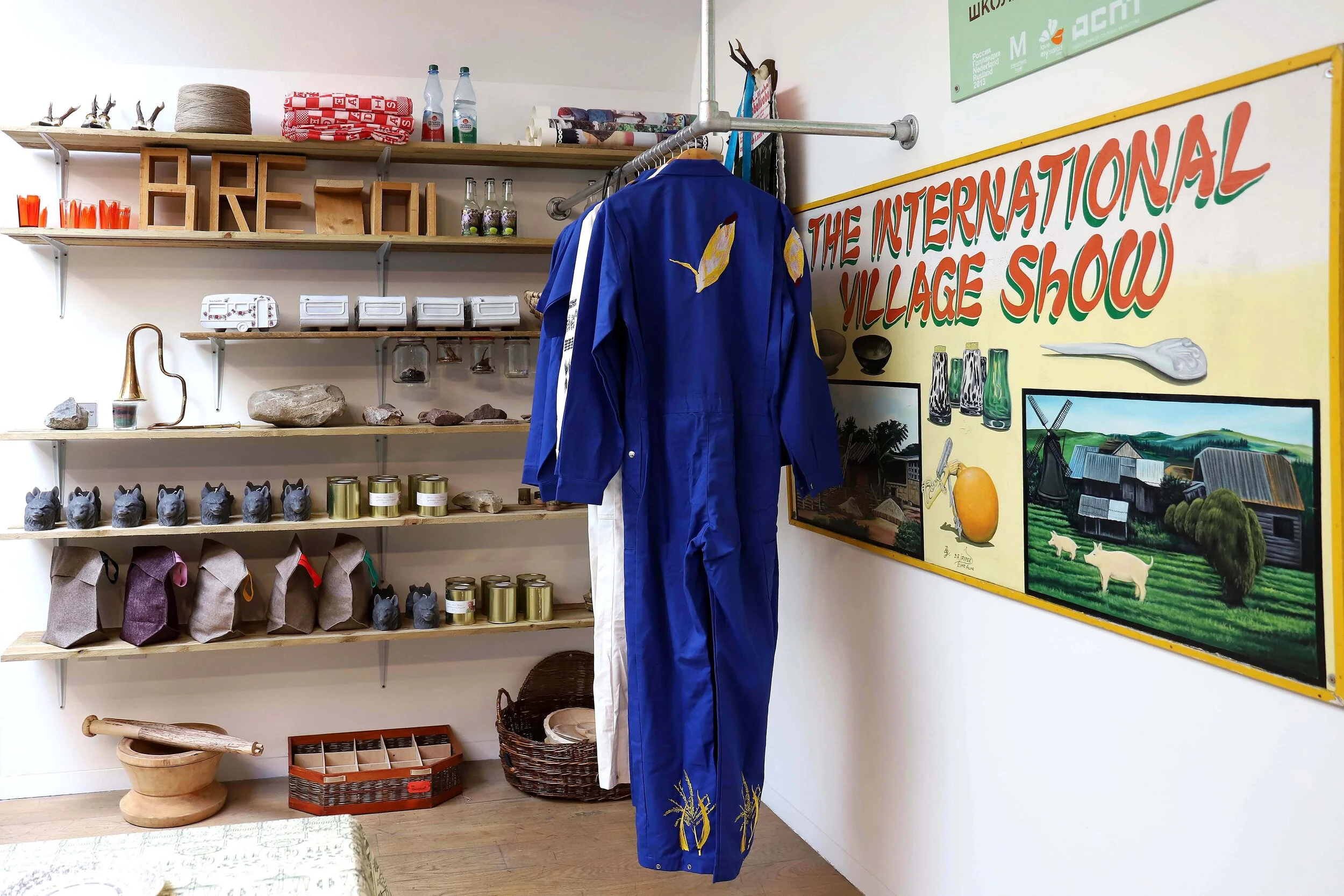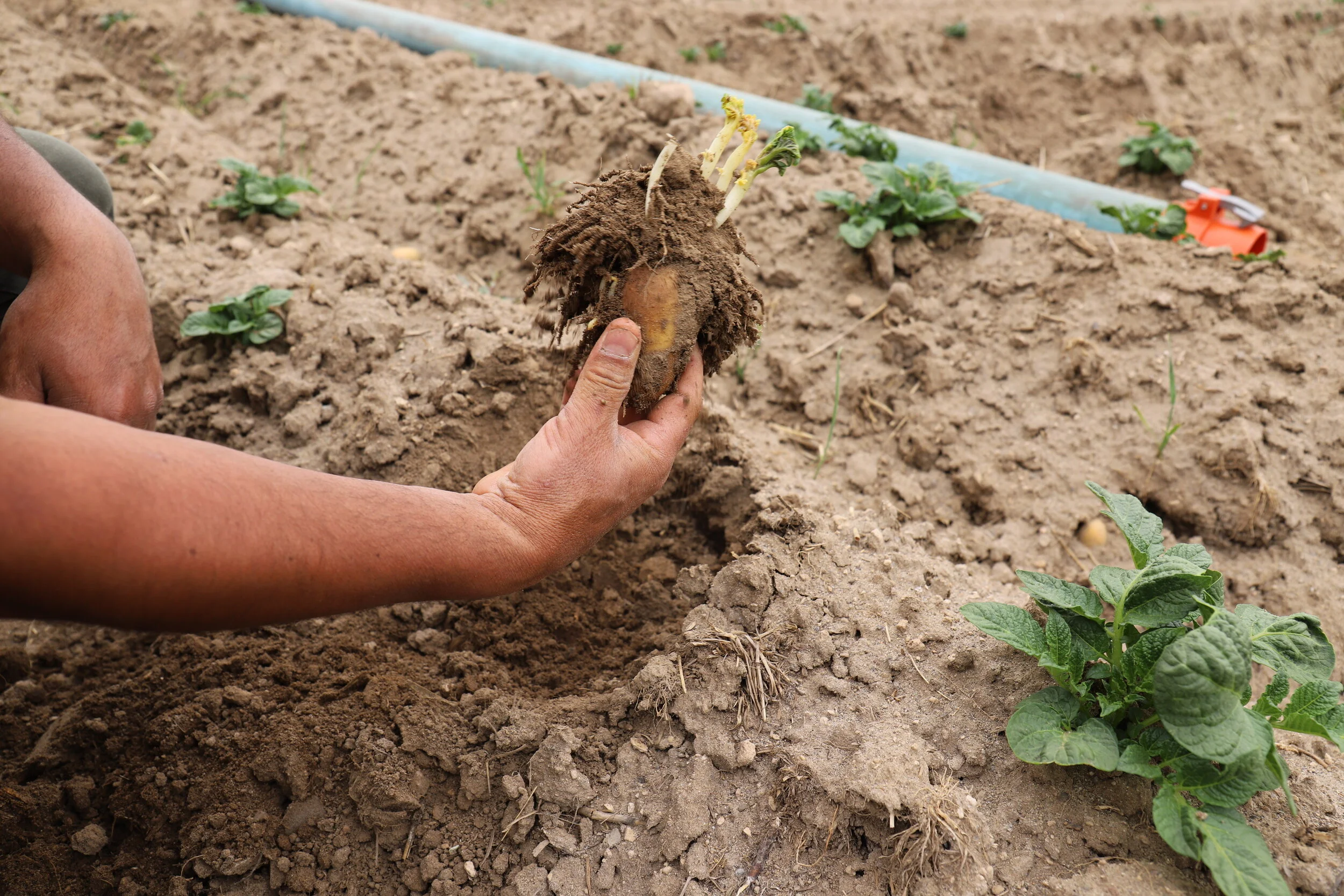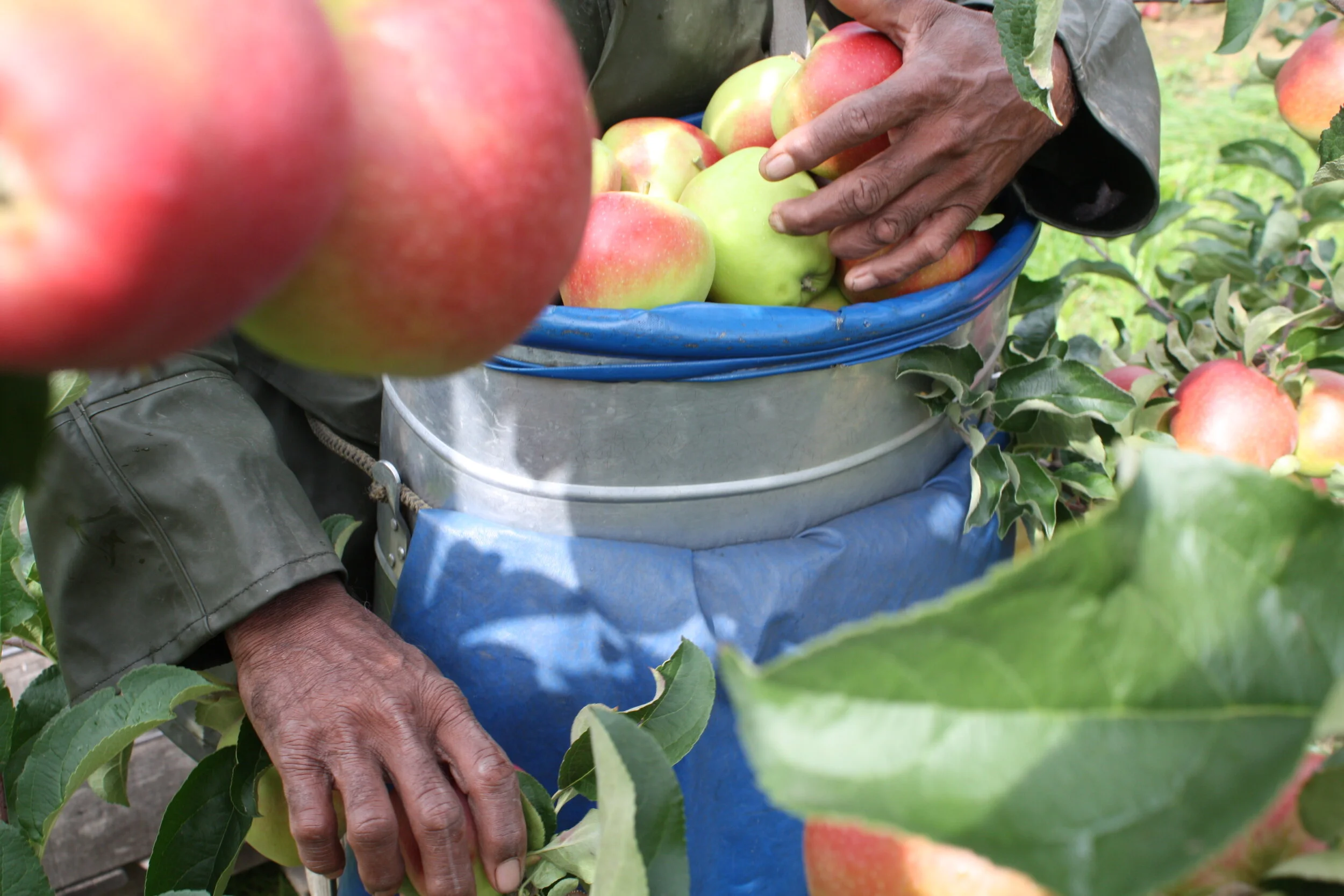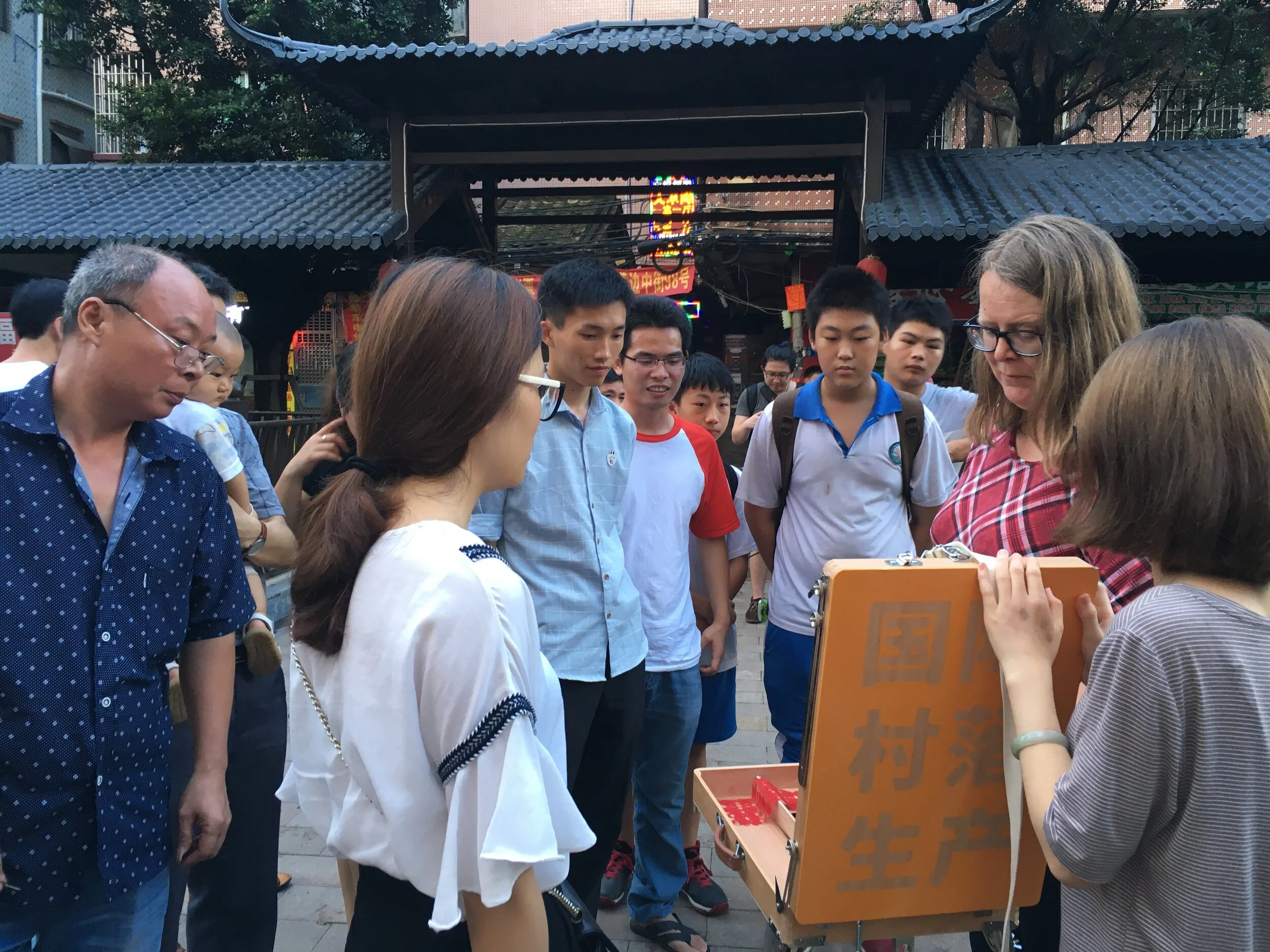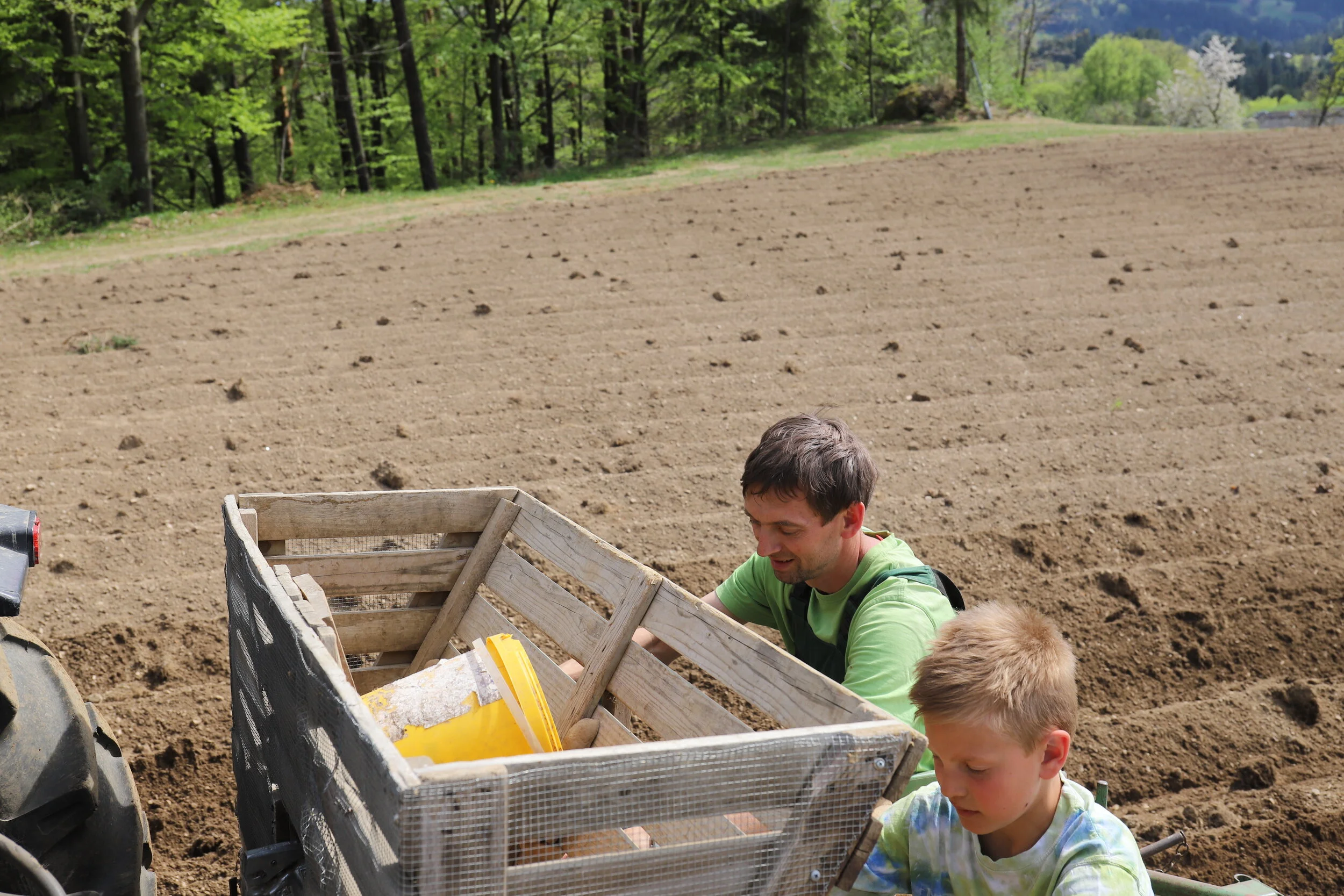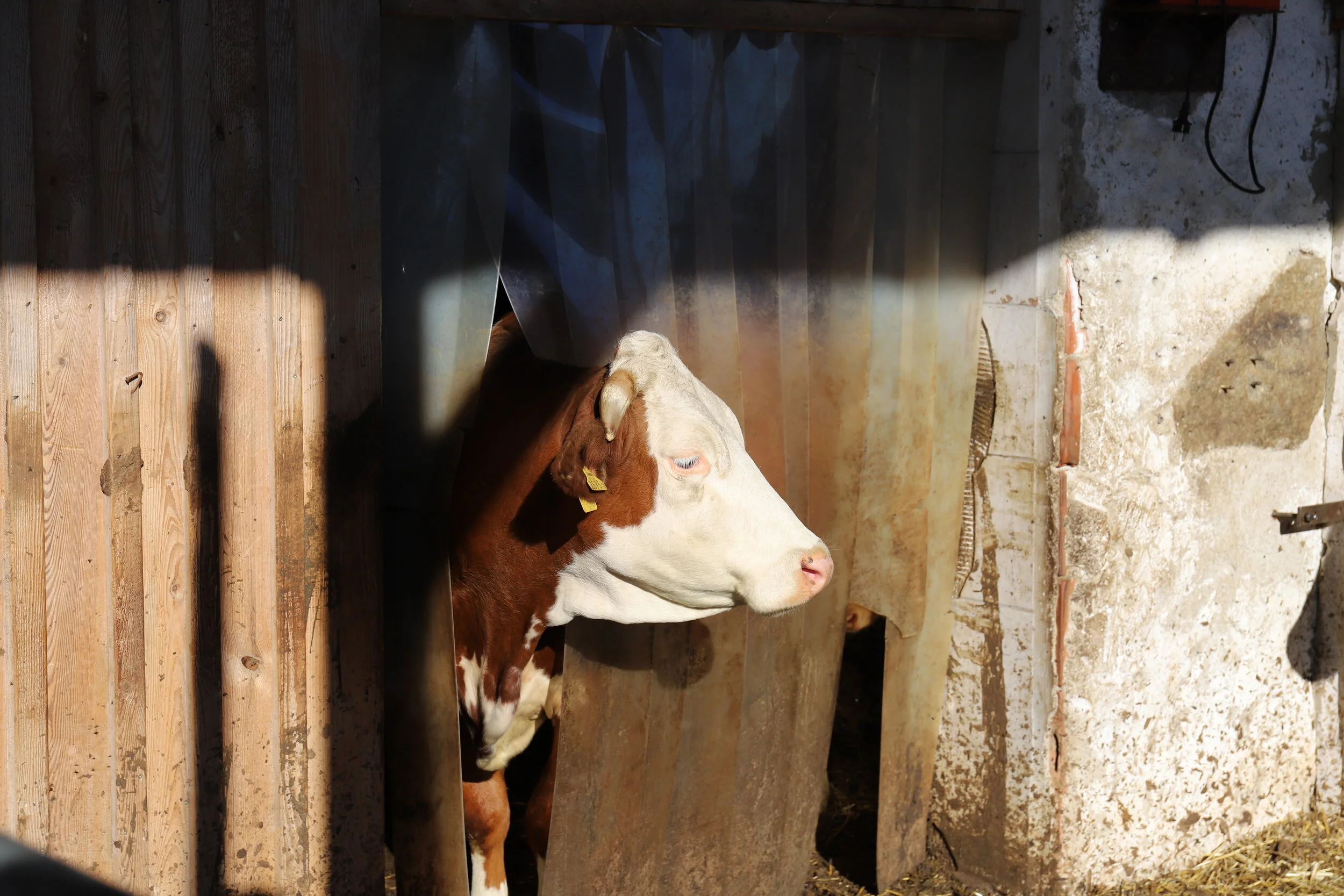Myvillages
In 2003, contemporary artists Wapke Feenstra, Kathrin Böhm, and Antje Schiffers formed an international collective to explore the multitudinous realities of ‘the rural,’ their artworks challenging hegemonic assumptions about urban and rural, centre and periphery, and sites ‘for and of’ cultural production. A dialogue, below, between Wapke of Myvillages and Beverly of Fields in Fields began in May 2019, just as Myvillages’ exhibition Setting the Table: Village Politics was opening at Whitechapel Gallery in London, and concluded earlier this month amidst a tumultuous, historical year. Generous and direct in her reflections, insisting on honesty and thoughtfulness in return, Wapke brings into these conversations, as she does into her ever-expanding body of work: humour, translocal discovery, and a penchant for the unexpected.
Interview with Wapke Feenstra, co-founder of Myvillages.
Setting the Table: Village Politics, Myvillages at Whitechapel Gallery, London, England, 2019. Photo by Wapke Feenstra.
“I only work with family farms because, well, I came from a family farm but also because everywhere in the world you have family farms. The land is from the grandparents, or the great-grandparents, that you want to give to your own kids — that’s another responsibility than when you have stockholders.”
Fields in Fields: Myvillages’ International Village Shop includes very different objects, each with very different origins, whether it’s about an inside joke or local folklore or something that the villagers want to do to rebel against a larger system. I’m curious about the creation process and the significance of a product. Are you trying to engage them with something wider, say, with the wider economy? Is it about wanting to connect something very local with something very global?
Wapke Feenstra: Yes, it’s all of that. But of course, in the end, it is a shop — which is actually quite simple as we all know how to trade. You can make a small display and put something on it and say to the passersby: “This is the shop.” Our International Village Shop can also take the form of a big installation in a museum show, with sales videos or product launches. The shop is not clear-cut but it does have a few common elements. For me, it starts with playing shop. I did it as a very young kid in my village, before I went to school (I did not go to school until the age of 6); with the neighbourhood kids we would collect empty food packages and fill it with hay or soil, and we would put this on a table or a wooden beam, and with that, we played shop. Everybody understands shopping, which also makes it an easy-to-understand social sculpture. In an art context it is often more uncomfortable for our shop costumers than in a village, because people in art want to know where they are part of — they try hard to understand where are they part of and want to reflect on the social interaction. Of course it is about value, about economy, about a local identity, about rural production. But, when I do sales in the performative way of the International Village Shop, I do not go into this kind of reflection with my costumers; I just want to play shop.
Then in this shop there is this thing, object, product, that can be any thing. We can also call it the goods or artefacts. To set up a shop in an institution like a museum or kunstverein, we offer the artefacts that we think could fit and we ask the curator as well, “What do you think we should have in the shop?” Sometimes they say, “We would like to have fresh food,” and, “I know a local farmer,” so, for example, in the summer of 2011 in kunstverein Phorzheim we were selling vegetables. In 2013 we set up a shop-in-a-shop in Zvizzchi (a small Russian village in the Ugra Park in the Kaluga district). Once the shop was there the villagers made their own telephone circle (or phone tree) to track garden surplus and they put up signs with their telephone numbers in the shop. Since 2015 they have reorganised the shop several times as a village committee runs this shop that still functions under the name Made in Zvizzchi — so it’s not all our work.
Another element is the design of the shop. We tend not to ship in big displays so we often try to set it up with existing furniture and/or recycled wood. We have also built mobile shop structures and co-designed a more permanent shop with a local crafts-workshop. We try to create assemblages of the goods on the displays and shelves, but it’s never only our taste or choice. It’s always co-creating. It’s not we, top-down, who say, “It should look like that.”
We also initiate New Village Goods. We go to a village — sometimes on invitation, sometimes we choose the village ourselves. For example Kathrin Böhm has been working within her home village Höfen since 2006 and the first International Village Shop took place in their village hall. On a trading table with local products, the Frogbutterspoon and Frogskeleton Cape (because the nickname of the villagers is “The Frogs”) were launched — the first New Village Goods! How do we design or co-design? The villagers involved are not a very fixed group. Around the table: one is from the choir, one is on the football group, the other owns a farm, maybe the other is the schoolteacher, and usually we have one or two artists, designers, or an art institute. We ask them: “What are local narratives? What are local skills? What are local resources?” Then we learn from these people, from this area, this village, and we discuss and draw together to make a new product. We work with them to ask, “What would be an interesting thing to represent ourselves and our village?” Of course there are limitations in budget, time, skills, and so on. We often consider, “What machines and workshops are still in the village or the area?” If you want to weave a big textile but you don’t have a machine in your area then it’s impossible or at least not locally made. Can we accept that? From scratch we co-design New Village Goods, these objects we have developed ourselves with people in rural places, which we carry with us if we travel to tell the local story in trans-local settings — they are our agents to tell the story of them and that area. It can be a small soap, a very expensive silver case, or a bag to store your potatoes to keep them dry and dark.
So the International Village Shop is broad and the New Village Goods are specifically-designed and locally-made objects. That is how we do it.
Above: Setting the Table: Village Politics, Myvillages at Whitechapel Gallery, London, England, 2019. Photo by Wapke Feenstra. Below: Design sketches by Wapke Feenstra for Janus die Wolfskerze. Product for International Village Shop, courtesy of Kunstverein Springhornhof, Neuenkirchen, Germany, 2018. Photo by Almende 2018 / Eric Giraudet de Boudemange.
Fields: Farming is a recurring theme. I wonder if you have found underlying, common sentiments amongst the farmers. Are they optimistic, for instance, about what’s going to happen in the near future and the role of agriculture? Or pessimistic about technology?
WF: I grew up on a farm, and I work with farmers worldwide. It’s a complex question and a very, very urgent topic.
I worked in Austria last year with nine family farms in Festival der Regionen 2019. In Austria all the farms have several economic pillars: they welcome tourists; they maintain small delivery chains to the cities; and they can work more independently because they do not have big loans from banks. For me this was a big contrast with the Netherlands where a lot of farms need new technology because the land price is very high, and they need to obtain loans to buy the land. So it also depends on: Is it easy to get land? Is the land cheap or not? Do you need a big production to be able to pay your loan?
Despite differences however all farmers would say that they’ve known, already, for more than 25 years that Klima is changing. I hear that in Colorado where water management is a problem, I hear that in Japan when they talk about extreme weather, I hear that in China where rural migrants are moving to cities, in Jakarta where there is a flooding problem on Java, and in Turkey, Germany, Spain, Italy, Belgium, Eastern Europe. That’s just where I hear bottom-up stories, and yes — they know that we need to change things worldwide. But the solutions are different. And I must say that no farmer I have met would talk as romantically about it as most of the artists I encounter. Artists think, supported by urban farming imaginations, that touching soil everyday, doing the work yourself, is the solution. But most farmers know (I know this side also) that if you need to feed millions and millions of people, you need industrialisation. Industrialisation doesn’t have to mean that it is not biological or that it is not good for the cattle. For example I worked and filmed farmers who have a milk robot and they watch around 180 cows in a computer program, and therefore the farmers are less in the stables themselves. In art audiences I got the reaction, “But then this farmer doesn’t know the name of the cows anymore!” But the cow is not interested if you know her name. Actually, a cow who lives in a herd and has a milk robot acts more natural than a cow that’s milked manually with a machine twice a day. I grew up with cows so I also could see it and was amazed to do this observation. I have learned a lot from farmers, and the more you know details from farmers, the less it’s black and white. Their dilemmas are complex and layered. I also saw greeneries that produced energy from solar cells in their roofs. They have bio-gas made from the leftovers. So it’s about following these bottom-up stories and seeing how they try to solve problems. I try to come in as an artist and learn and listen. The “I know it better attitude” and preconceptions I also have are hard to tackle, but as most of them experience the Klima change and urgent dilemmas on a daily basis, I want to re-define images of farming with them.
It is also good to add that I only work with family farms because, well, I came from a family farm but also because everywhere in the world you have family farms. The land is from the grandparents, or the great-grandparents, that you want to give to your own kids — that’s another responsibility than when you have stockholders. You know? And I’m interested in not just how bio-farmers work — I can even work with families that produce in such a way that I personally would not buy their food — I’m most interested in their culture, their dilemmas, their daily rhythm. This can be a bit strange in art because we all want a 15-minute feel-good story. But there is not one feel-good story.
Above: Potato Growers, Wapke Feenstra with Kevser Güler, Istanbul Biennale, Turkey, 2019. Photo by Wapke Feenstra.
As I mentioned, the imagination of urban farming is a bit overdone and overexposed in the urban gaze. I really enjoy visiting urban rooftop farms and having a meal there but in the end it is just a welcome symbolic food production system — it’s not feeding London. In 2010-11 Myvillages did the project Vorratskammer/Pantry in Berlin, where we had to feed 8,000 people in five days. So. Much. Food. It’s only 8,000 people in five days and it’s not even all meals. We needed to harvest over five thousand kilos of vegetables to make soup, meals, salads. For a pantry with all this local food, including meat, oil, bread, cheese, preserves, fish, and drinks, we had to work with 80 producers and farmers in wider Berlin to make it happen. So if you have one rooftop garden there is likely not enough crop for just one connected restaurant. Saying this, I also want to underline that urban farming and showing what local food production can be are important in art and culture — it brings growing food into the city, to experience this in urban settings. To touch the soil and to learn production skills with new urban generations are important. But the dilemmas in farming have bigger dimensions.
Last year I was in Cappadocia, Turkey, with the project Potato Growers. We made a story and a meal at the Istanbul Biennale with three family farms. There I learned about the global politics that come in and specifically what Dutch agricultural exports had done: Farmers told me that there had been a lot of dumping of bad seed potatoes into Turkey until the end of 1990s, stuff that we could not use in western Europe. (Ever since the global world order and more knowledge has came up, it’s not so easy to do anymore. I hear that China and Europe are still dumping stuff into Africa, but to dump bad seed potatoes into Turkey or Russia or China? Forget it.) There are huge international dynamics behind food production which, of course, are too big to challenge in one art project, but from the stories of the three family farms we learned how food production is very intertwined with politics. When I was doing field research for Potato Growers with curator Kevser Güler, due to the mayor elections in Turkey, there was some tension over the inflation of the lira, so all at once tons of potatoes and onions were being imported to Istanbul and sold cheaply in government-run vegetable stalls. All of this was set up after blaming the farmers for the high food prices, claiming that they had caused the current economic problems — which was far from true. So the political gain with food was going on right under our noses. Also, for the restaurant owner who was formerly a potato grower, it is cheaper for him to buy potatoes in a shop than to grow it himself; but for the other farmers it is hard to see his abandoned fields which still suffer from DDT [a chemical pesticide since banned under the Stockholm Convention in 2001] that was used on his fields until the end of the 1990s. The third potato-grower family we portrayed in Cappadocia now cooperates with a Dutch seed-potato company to implement and exchange knowledge on how to adapt to Turkish soil and Klima.
My choice is to always tell the farmers’ stories from a personal point of view, with their voice. They can also correct the text before it gets published. I’m grateful and proud that they want to work with me, as you need mutual trust and transparency to work on art and farming.
“It’s always documentary, it’s always unexpected — and in that, you keep the focus on what’s interesting for your broader goals as well. The works pop up locally but make you think globally.”
Vorratskammer/Pantry, Myvillages, Berlin, Germany, 2010-2011, book edition with tablecloth 2012. Photo by Myvillages.
Fields: All of your works, particularly your recent book The Rural, grapple with hegemony, agency, cultural production. Has anything come out of your methodologies or engagements with systems of power that has surprised you the most? For example, are there any ways that people are subverting or perpetuating power relations, or have there been certain multimedia methods which have unexpectedly proven to be more successful or egalitarian than other methods? What has surprised you most out of these conversations?
WF: With the shop for example, it’s always interesting to bring a work or good to another place. Some goods can be bestsellers and sell out in some places, so I order a lot of new products assuming, Oh! They might like this bag in Italy, but they do not at all! Also with films, like Farmers and Ranchers which was filmed in Colorado and Fryslân, I was surprised to be asked to show it in Japan with some new works I had made locally and, at first, I thought this was maybe not a good idea. Why does the curator want to have this film that is based so far away from Japan? But he had no doubt and said, “Yes. I want to have that film in the show.” Then I met some farmers in a village in the province of Gunma who are 60 or 65, and they told me the average age in that village is around 70. The farmers told me why they really liked the film was because they saw young people between ages of 16 and 20 doing farm work. They loved it! So the curator Fumihiko Sumitomo was right! He knew his public. He eventually wanted to buy the film for the Arts Maebashi Museum. That was totally unexpected. You have to trust the people who live in a context. Good curators can see what your former work can do in another context, and the implementation of works or proven work methods is, each time, a dialogue and co-production with them.
The intertwined rural and urban can be a surprise as well. In 2017 I wanted to bring the International Village Shop with Myvillages to Guangzhou, China, to the Times Museum there. At first I had the idea, because they have so many factories there, that it might be interesting if they copy a few of our New Village Goods items, to make copies in the factories in China and to film this process to see how they would react to the items. But the staff of the Times Museum didn’t like this idea at all. They said, “No, no. That’s not what we want. We want you to make a new item here.” So I said, “Okay, that’s also possible.” We ended up making a showcase in the exhibition space at street level, and part of the exhibition was an open cupboard and a meeting place where we could gather during the show and the new item (with a production film) was added halfway through the show. But when I started working there I soon had to face that it was not possible to form a design workshop as we normally do; the gap was too big between the factories in the urban village and the museum. People from the factories don’t come to meetings in the museum. So I decided to go on the street and I took items like fur and silver, also some dried beans from Japan, some soil — I always have items with me to trigger people — and I went to the streets with a translator and made drawings of the oral stories and ideas. So our design workshops actually became street interventions. We were standing on the street listening to people who, in that urban village Huangbian, came from rural places all over China. They would discuss, say, the beans and the fur and whether they had it in their home area, then I would learn about different areas in China this way — what they had there, what they didn’t. You always have to navigate what is there: They don’t want to make copies of existing objects from the Shop; if I do a workshop nobody will come to the museum. I also learned that they do not speak Cantonese, they only speak Mandarin, for me this was new. Then we found out that most of them make bags in their factories, but they do not wear bags themselves in their rural area, where they come from. In a rural area you wouldn't wear a handbag because you do not need money when you go to the fields, you do not need your ID, you do not need your keys or an umbrella. We decided to make a handbag for our Shop because it represents this discrepancy: These people who make these bags all day come from areas where they would not wear a handbag themselves. The museum staff wanted to make the Huangbian Bag with me so we worked closely together with two local factories, and everything was co-designed and based on the knowledge we had gathered in Huangbian.
What is coming out of these works that are locally-rooted is always a surprise for the people involved. Otherwise, why would I do it? Why would I make a film if I already knew what was in the film? It’s always documentary, it’s always unexpected — and in that, you keep the focus on what’s interesting for your broader goals as well. The works pop up locally but make you think globally. I was surprised that the museum seemed to know more about what is in the next documenta in Kassel than what is done in the factory a few hundred meters away, for instance. They had plans to integrate the locals more — and they did, in this project and more. So what we know or do not know about our own surroundings is also often surprising. It is same for me; my studio is in an urban area in Rotterdam-South and I am not informed about the harbour industries close by. It was there that I began to think about my own neighbourhood here in Rotterdam which has a lot of rural migrants, so I recently made a big project here called Boerenzij (The Rural Side) on rural migrations to the city of Rotterdam; I wanted to learn about the migrants’ mindsets and how people adapt to a city when you come from rural places. From unexpected encounters — this co-design and production process in Huangbian — I also got new inspirations. You know? So it’s never rigid.
Fields: Yes, and there is again that blurring of the urban and the rural, and how geographically they can actually be tricky to define.
WF: Yes, and you think about centre and periphery, about a dominant culture. It also says something about centrifugation in cities — for example the south of Rotterdam is changing rapidly. I observe here (and in general) that when rich people come in and fancy penthouses are built, the local food and farmers’ markets come in again. At first when people migrate to a city, we tell them in a way (not loud, but the message is): “You have to be happy to be here, because you are now in a civilised city. You are not in the rural part anymore.” And also: “Forget your rural skills.” Then later when the rich want to have a local shop or to have their own rooftop greenery or whatever — farming skills are hot again. That is such a strange detour. Culturally I think it’s an insult to rural culture. I think cities have to reconsider how they deal with the rural.
In this project in Rotterdam, I took a non-national, non-religious, non-geographical common for these people by saying, “Hey, are you rural?” And that was sometimes tough, I must say — not to talk about the fact that they may have no legal status yet, or that their parents are still landowners somewhere else, or how they may be seen as Muslims in these times… So in Boerenzij we went for our mutual power: the rural! It was the most mixed group I’ve ever worked with. It was quite a challenge!
Alte Böden-Neue Standbeine, Festival der Regionen, Austria, 2019. Photo by Nick Mangafas.
Hands-On Series 2008-2020, Wapke Feenstra, apple harvest, Borgloon, Belgium. Photo by Wapke Feenstra.
“Every context receives bodies that are uncommon differently. It will always get a kind of cultural interaction and you cannot avoid it. It’s about reading the image of who you are.”
Huangbian Bag, Times Museum, Guangdong, China, 2017. Photo by Tan Yue / Times Museum.
Boerenzij, Wapke Feenstra at TENT Rotterdam, Netherlands, 2019. Photo by Aad Hoogendoorn / TENT.
Fields: I have a more personal question related to migration, and this idea of a dominant culture. As you can see, I’m an Asian, Canadian. I look quite young, and I’m a female. My husband and I moved to this small village in England about two years ago, and I am one of the very few ethnic-minority residents within a 30-, 40-village radius. In my experience, there seems to be this underlying sort of distrust or wariness just because of the way I look. Not with every one, nor in every village, of course. But, for instance, when I walk into a village pub it is not uncommon for me to experience a sudden quiet that comes over the room, and people will uncomfortably glance over or stare. Or when I go out to walk our dog in a neighbouring field or town, sometimes I sense their suspicion or simply their curiosity of my presence there, and I feel as if I must smile and say hello and somehow make it known that I’m friendly, that I “come in peace,” that it’s not my wish to make them feel uncomfortable. As a result I have become hyper-aware of my self in a way I haven’t before, in a way that I had previously taken ethnic diversity in my place of home for granted. There are times when people will speak to me as if I’m a very young child. In other instances, they continually avoid eye contact with me in conversation or, more often, they will address my husband only as if I am not there (and then, I don’t know if it’s discomfort or overt sexism…).
When the coronavirus reached global pandemic status in early March, social distancing measures meant that only one person per household was allowed into shops and supermarkets. My presence became more pronounced, whether on walks or in market shops, which coincided with news of increasing racial attacks against Chinese persons worldwide. For us, my husband and I became more cautious about my queueing up in quiet places or shopping alone, so during the lockdown months he would go into supermarkets and village shops on our behalf, or we would find those which allowed two persons to enter. I should say in these instances I did not fear for my life; rather it was a fear of the possibility of another’s ignorance, and the potential of that to result in unwarranted conflict, verbal attack, or other abuse. For me it was a risk that seemed unworthy of something like a dozen eggs or some carrots. Finally, one afternoon, I decided to google “ethnic minorities in rural England” (it took me two years!). I very quickly realised that there are many examples of similar experiences amongst people of colour living in or visiting rural England.* In a more extreme account, the police were called out on “reports of a suspicious jogger,” a story shared by Benjamin Zephaniah, a British Black poet and writer who had been visiting his friend in the countryside and had gone for a run on his friend’s farm (he had never even left his friend’s property). In another account Andrea Levy, a British Jamaican novelist based in London, noticed about the countryside: “The one thing that amazed me was that you always see a Chinese and Indian takeaway, however remote the place … They must live in complete isolation.” Many of these articles were written in 2004 — sixteen years ago. It’s hard not to feel like very little has changed.
So these experiences make me wonder — when we question how the global is pragmatically, individually, and in wider discourse making space for the rural — I also wonder how the rural is making space for the global in a different way, whether it’s through discussions about diversity of culture, ethnicity, gender, or age as well.
WF: Is your husband from the UK?
Fields: Yes, he’s English.
WF: Ah, yes. Yes I understand your question, but the question is complex because, of course, you come with a body, and there is this collection of other bodies. That happens also to me when I travel. It happens when I go to South Europe because I’m obviously not from South Europe. When I was 20, travelling to South Europe, I could not walk alone on the street because of sexism. Now I can walk on the street — I have the perfect age to travel now. I’m this white older lady, I will not steal their husbands, and I obviously have some established practice because I’m there. It’s a bit ironic to say but it’s the best age to travel. Maybe not physically because it’s exhausting. I also know that when I’m in Guangzhou, with my body, people get curious. The accompanying assistant-curator Jinglun Zhu remarked that if I was an African man, people would discriminate against me. That is sad to hear and a good moment to realise that I use my privileges in my work. So in a way I have a body, now, that is good to navigate in the world. But then, I have no family. If you live rurally for a few months and you have no husband or family with you, that’s not good in a rural area either. Families are much more accessible. Because it’s not only body, it’s also conventional life. You know?
On the other hand the rural is not at all cut off from contemporary issues. In 2016 I worked near Torino where they have many refugees coming in from Africa and Syria. Residents in some of these rural areas are taking in refugee families, and the Italian people there are happy that their village has new families. Then there are collapses between African and Syrian people, as much as between Italian and the refugees. Or, think about the tourists that come in and take over some rural areas. Expected and unexpected bodies can give new dynamics. It’s a mix of bodies at once, just like in a city, so every rural is different.
The English countryside is, as far as I have experienced, quite a white and conservative countryside. (I have worked in the Lake District, Shropshire, Wales, and around Cambridge.) And then, if you were a Black man, the experience would be even worse. Do you know the works of Harold Offeh? He is from Ghana and grew up in the UK and his work is about the appearance of the Black body. He was part of The Rural Assembly: Contemporary Art and Spaces of Connection in Wysing Arts Centre with his wonderful performance named BodyLandscapeMemory. It was about moving away from stereotypes of the labouring or victimised body, exploring leisure, play, and connections to the landscape — Black bodies in the landscape. He really makes me think about rural imaginations and landscape genres. Such a great performance!
And of course there is rural gender stuff. With Myvillages we decided to work with the rural as three female artists. If you talk about the rural, or landscape, or the history of rural appearance in art, it’s one of the most male areas. The fact that a woman can own the gaze on a landscape is an unexpected thing, in the genre of landscape, and that’s why we had to be our own support group. It’s getting better now. The price of my artworks were lowered two decades ago by working in a collective, and I knew this would happen, so sometimes you have to do stuff because you’re interested in it even if it’s not economically best! You just have to survive.
Do you still have a lot of people in China you visit?
Fields: I have family in Hong Kong and I grew up in Canada, and I go back to visit quite often.
WF: But in Hong Kong it’s also a very big society, people from the UK would not stand out there.
Fields: No, but there’s a strange social dynamic in Hong Kong that I didn’t expect, before moving back to live there as an adult. I feel like it’s left over from British colonialism. There are frustrating class and racial dynamics that sort of try to go under the radar. Like how my husband was paid more for the same job title, or how an expat is often treated differently, preferentially — not only economically but socially, culturally — because one is European, for instance, compared to a local Chinese, Indonesian, or Filipino person. I think there are these leftover politics and inequalities.
WF: Ah, yes. The UK can be so class conscious. When I'm there in the UK I often think, oh my god. It can be so kindly aggressive that it sometimes takes me years to understand what they are doing. I think it is also a problem for society itself, because then it cannot function as a transparent democracy. It’s just acts like democracy, but it’s not. That is really a problem. Especially now with the crisis, with Brexit, with everything. But I know that it’s also very British not to have a problem!
Fields: Just pretend everything is fine.
WF: Pretend everything is fine! Well, I think you can learn from digging into dilemmas — and analyse them. That's not what British people want me to do. When I am there, I have to think: How can I bring my view of the matter? Then I think: Okay, I do it Dutch! I just say, "I know you don't like it, but ..." It’s funny. For me, being Dutch, it’s such a complex way of communicating. Not to forget the Dutch way also has its limits…
In general you can state that every context receives bodies that are uncommon differently. It will always get a kind of cultural interaction and you cannot avoid it. It’s about reading the image of who you are. I’m sure as soon as other Asian people come in, even when they are from very far away, locals will say to you, “Do you know them?” to connect them to you! When I’m in Africa or in an Asian country, people ask me, “Do you know this and this person?” And refer to Dutch or European people they have met before. It’s not different in the city or the countryside. There’s this kind of pairing of people. But I can understand that it feels strange sometimes. That you feel alienated. Take care that this does not take over your identity.
Fields: It’s interesting to hear you say that because I feel like I’ve been doing much work recently, internal work, of just that. I realised I had been consuming these assumptions and social realities unknowingly — previously I had assumed it to be my responsibility, or my politeness particularly as a newcomer, to pretend not to notice or to be the one to make the extra effort to put others at ease, whether it’s in relation to my appearance, my ethnicity, age, gender, accent, preferences. But I don’t want this to become a part of my identity, I don’t want this anymore. I begin to think about how this spills over to other areas of my life, outside the village, also. And, it really does take mental and emotional work to notice it and to know that I can, or that I have to, spit it out. To disentangle all of it.
WF: Yes. Yes that happens. Then you have to spread it and you have to put it under the nose of others. I always say, in the list of big problems in the world, this is a minor problem, but even then I want to push it out. Express it to others. Like in Myvillages, after 20 years, I was really fed up with the fact that I work in a group where I speak German and English on a daily basis, but I’m not native so I cannot write well or speak perfectly in either. The other members do not speak or read any Dutch, and that did not seem a problem for me in 2003 when we had set up Myvillages. Co-founder Antje Schiffers lives in Berlin and can write German well, Kathrin Böhm is based in London and can write English well (also German as she grew up in Germany), so then I’m always the less good writer and speaker. But in the ’90s I wrote poetic texts and essays for an arts paper in Dutch, and now after 20 years I have lost even those skills a bit. Working in a group where I’m always the lesser skilled, it really made me — I really thought: Oh, this is now part of my identity. I don’t want that! Egh! I’ve had enough with you! I’ve had enough! You know? It is an identity struggle. I am with my language skills in a periphery. But if we are talking about centre and periphery, those dynamics are part of Myvillages’ concerns, and I need to act. That is why I showed my soil collection to the audience during our lecture in Whitechapel Gallery in 2019 and made a bit of a show out of it. Just to have fun and not be in the periphery of my language. And these dynamics are allowed. There’s nothing against this. You also can make it a part of your work. It’s also your life. React on it physically, also. Use it as a power.
*Some of the articles referred to here include: “Countryside retreat: Black and Asian people rarely visit rural Britain…” by Raekha Prasad for The Guardian, 28 Jan 2004; “Why a day in the country is a real mountain to climb for black Britons…” by Juliette Jowit for The Guardian, 2 May 2004; “Green and pleasant lands ‘no place to be black’” by Herpreet Kaur Grewal for The Guardian, 27 Oct 2004; “Where are the black voices of rural and suburban Britain? We need to hear them” written by Jesse Bernard for The Guardian, 7 Sep 2017.
In light of Black Lives Matter and wider reckonings of systemic racism, articles are resurfacing again to redress the issue, including “Ethnic minorities do face discrimination in the countryside…” by Helena Horton for The Telegraph, 29 Jun 2020; and “Why black lives matter in the countryside” by Louisa Adjoa Parker for the Campaign to Protect Rural England Charity, 26 Jun 2020.
Alte Böden-Neue Standbeine, Festival der Regionen, Austria, 2019. Photo by Wapke Feenstra.
Alte Böden-Neue Standbeine, Festival der Regionen, Austria, 2019. Photo by Wapke Feenstra.
Fields: As a final question can we go back briefly to this idea that, because of globalisation and new technologies, the urban and the rural are blurring in ways they perhaps haven’t been able to before? Is this something new, or do we like to think it is something new? And, do you believe there are concrete opportunities or challenges for those who are rural-based right now?
WF: Mmm… Both. Well, first, I think rural areas have always depended on migration. Labourers were always migrants; they came for the season. In Europe, people from the south went to the north because the seasons were different. You have grape-picking in France at one time, then you have something else in Italy at another time. In the past, Eastern Europe Soviet governments also sent academics to the countryside to spread the (power of) knowledge, or after every war there was displacement and forced migration on our continent as well, and those who were living rurally mixed up with newcomers and vice versa.
But talking digitally, the three Myvillages founders have studios in London, Berlin, and Rotterdam, and we could start our work together in 2003 as that was the time broadband internet became increasingly common. It made it all workable — broadband made it possible to send pictures, sketches, and designs digitally. (Before it was all done over fax or going by bike to the nearby post office). Email was just text and websites made in HTML. So media has made Myvillages possible. In the last five years, we are experiencing more and more what media — new media or social media or other media, or current data systems — does with algorithmus. First of all, when Myvillages works in cities with bigger institutes it is much easier to find us online, but no, not the works or shows that are described by the Russian, Chinese, or Japanese Institutes. These are not easy to find (or not at all available) over a search. We are hanging in a system that I do not understand well, but I see unexpected narrow lines of interests come up in my searches and advertisements. This means that a person who is not in your focus of interest, or has a name with other fonts, is not easy to find, so I miss a lot of other artists, other groups, other performers. If you go on the global search for “Myvillages,” for example, it is always Kathrin’s projects that come up first, then Antje, then mine, because Kathrin’s are in English and on an IP-address in the UK, Antje’s (and most of the Myvillages websites) are IP-wise based in Germany, and mine are Dutch — I work on a Rotterdam-based server and have a Dutch IP. So technology and its algorithms also prefer English and German over Dutch. Which of course has to do with range, scale, and quantities. We are aware of this in Myvillages as, quite coincidentally, a few years ago I was looking for Myvillages information through computers in China or Japan and, yes, you can find UK-based, online information much more easily.
Fields: Wow. I’ve never thought about it this way before. Technology is perpetuating existing, spatialised hierarchies within its algorithms. That there is an Anglo-European-western dominance embedded, or now concealed, within the foundations of technology. That’s actually quite scary. The depth of this, as technology continues to shape our future.
WF: Yes, it is. Because it mainly functions on English, the language of the UK.
Boerenzij, Wapke Feenstra at TENT Rotterdam, Netherlands, 2019. Photo by Aad Hoogendoorn / TENT.
Dutch artist Wapke Feenstra explores the direct physical and mental environment by tapping into local knowledge. Together with Kathrin Böhm (UK/DE) and Antje Schiffers (DE), they founded Myvillages in 2003 to advocate for a new understanding of the rural as a place of and for cultural production. Past and current exhibitions include: TENT Rotterdam, Istanbul Biennale, Festival der Regionen, V&A, Whitechapel Gallery, Galerie für Zeitgenössische Kunst, Gudang Sarinah Ekosistem, Museum of Contemporary Arts Maebashi, Parco Arte Vivente, and Museo de Arte Contemporáneo de Castilla y León.
Myvillages’ work addresses the relationship between the rural and the urban, looking at different forms of production, pre-conceptions and power relationships, whilst passionately questioning the cultural hegemony of the urban. The collective is involved in co-operative projects in various villages and landscapes around the world, with the aim to bring a new dynamism to solidified notions of local resources and production, agriculture and culture, internal and external perception. Myvillages initiates and organises trans-local and international projects which range from informal presentations to long-term collaborations, from work in private spaces to museum exhibitions, from personal questions to multidisciplinary research and publications, from foraging to building permanent infrastructures.
Published in March 2019 by MIT Press and Whitechapel Gallery, Myvillages edited The Rural, an anthology of documentations by activists, artists, and writers: “This book looks at the rural as an identifiable particularity without being definable. The rural is a multitude and it is dynamic, it can be attached or detached from a geography, it can be a mindset, a certain practice or a shared identity. It is a common term without being precise. The rural and the urban are interdependent, and the current dichotomy has always been false but was maintained because power could be gained from playing down and denying the actual relationship between city and countryside … Artists surveyed include Lara Almarcegui, Lina Bo Bardi, Ruth Ewan, Forensic Architecture, Amy Franceschini, Fernando García-Dory, Grizedale Arts, Sigrid Holmwood, Huit Façettes, Brian Jungen, M12, Renzo Martens, Lala Meredith-Vula, Grace Ndiritu, OHO Group, Robert Smithson, Rirkrit Tiravanja, Andrea Zittel, Stephen Willats, Bedwyr Williams, Franciska Zólyom / Writers include Homi K. Bhabha, Okwui Enwezor, Hal Foster, Freeyad Ibrahim, Julia Kristeva, Henri Lefebvre, Marco Marcon, Georgy Nikich, Hans Ulrich Obrist, Paul O'Neill, Mike Pearson, Doina Petrescu, Tomasz Rakowski, Natalie Robertson, Marco Scotini, Vandana Shiva, Monika Szewczyk, David Teh, Colin Ward, Grit Weber, Stephen Wright.” Available here.
Published on 27 July 2020. Cover image by Wapke Feenstra, and cover of The Rural (DoCA series 2019), from project: Farmers and Ranchers, Wapke Feenstra and M12 Studio, Colorado, USA, 2013, a media-exchange project that was “a portrait of teenagers from two typical rural clichés; cowboy-land Colorado in the United States and the Dutch dairy-farming province Fryslân. The youngsters were asked to consider their futures in farming and ranching. Both watch as their landscapes undergo tremendous change: sea dikes are rising in Fryslân, while the Plains of Colorado suffer drought. A two-year documentary project, Farmers & Ranchers depicts how these landscapes are impacting the next generation of farmers and ranchers”; all images courtesy of Wapke Feenstra / Myvillages. ■ Visit wapke.nl and myvillages.org
